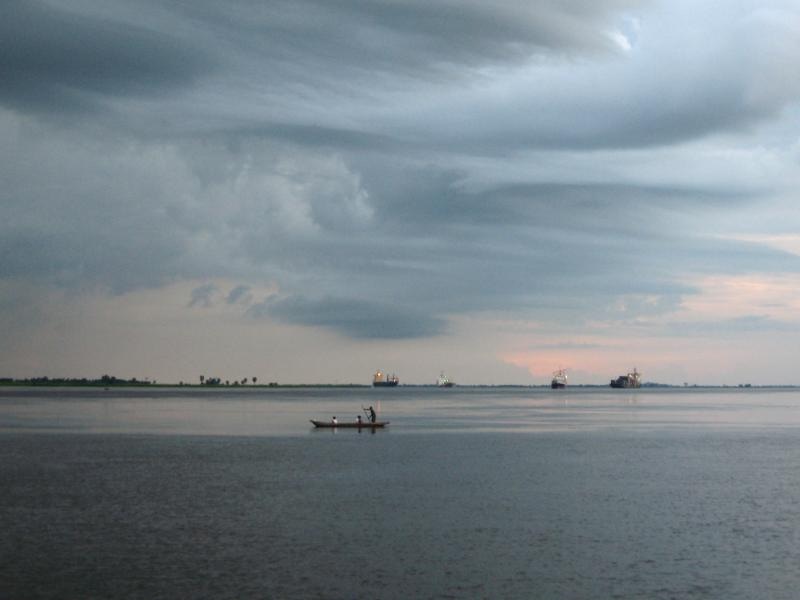Nov 8 2019
Researchers attempting to understand the global carbon cycle have long assumed that “black carbon” originates on land and reaches the ocean through streams and rivers. Black carbon refers to the decay-resistant carbon molecules modified by exposure to combustion or fire.
 Image Credit: Rensselaer Polytechnic Institute.
Image Credit: Rensselaer Polytechnic Institute.
An unpredicted finding reported recently in Nature Communications challenges this long-established assumption and presents an enticing new mystery: If oceanic black carbon is considerably different from the black carbon present in rivers, from where did it originate?
The signature of oceanic dissolved black carbon is very different from that of riverine dissolved black carbon, raising a host of fundamental questions. Are there other sources of dissolved black carbon? Is it being degraded away in rivers, sequestered in sediments, or altered beyond recognition before it reaches the open ocean? Is what we’ve measured actually fire-derived?
Sasha Wagner, Study Lead Author and Assistant Professor of Earth and Environmental Sciences, Rensselaer Polytechnic Institute
By questioning the origin of oceanic black carbon, the study published in Nature Communications complicates a mystery that Wagner has been investigating. Radiocarbon dating reveals the age of dissolved black carbon in the deep oceans to be nearly 20,000 years. However, calculations predict that rivers could substitute the whole amount of oceanic dissolved black carbon in about 500 years. If so much dissolved black carbon has been shifting downriver to the ocean, seemingly for several millennia, how come researchers have not found more of it?
In an attempt to find answers to such questions, Wagner devised a new method for the analysis of black carbon. Conventionally, sources of black carbon have been traced using a ratio between molecular proxies. However, since the ratio easily changes due to sunlight exposure, the technique is not reliable to use in aquatic environments.
Wagner’s new method adds carbon isotopes—carbon variants that have varying numbers of neutrons—to identify various sources of dissolved black carbon. Through the analysis of stable carbon isotope in the individual proxy molecules, terrestrial sources of black carbon can be tracked as it travels from soils to the ocean.
In her recently published work, Wagner used the method to pose a comprehensive question, comparing samples procured from the Pacific and Atlantic Oceans with large rivers, including the Amazon, Congo, Mississippi, and two Arctic Rivers.
The results indicate that oceanic dissolved black carbon contains a considerably higher proportion of carbon-13 (an isotope of carbon-12 that has one extra neutron) than dissolved black carbon found in international rivers.
“The values are really different, and while we’re still in the very early days of using this method, that result tells us that the black carbon in the ocean isn’t coming from rivers,” stated Wagner. “Riverine dissolved black carbon isn’t reaching the oceans, and that raises a lot of exciting alternatives we should explore.”
The use of isotope ratios to discern the separate origins of black carbon from lakes and streams from that found in the sea has disrupted some long-held beliefs in the scientific community. Sasha Wagner’s innovative approach to this compelling question is a great example of how faculty members at Rensselaer keep pushing the frontiers of science forward by asking hard questions and challenging the status quo.
Curt Breneman, Dean, Rensselaer School of Science
The study titled “Isotopic composition of oceanic dissolved black carbon reveals non-riverine source” was funded by the National Science Foundation (Chemical Oceanography #1756812, #1756733, and #1635618; Office of Polar Programs #1500169).
Wagner was joined in the study by Jay Brandes and Kun Ma at the University of Georgia (Skidaway Institute of Oceanography), Robert G.M. Spencer at Florida State University, Sarah Z. Rosengard at the University of British Columbia, Jose Mauro S. Moura at the Federal University of Western Para in Brazil, and Aron Stubbins at Northeastern University.